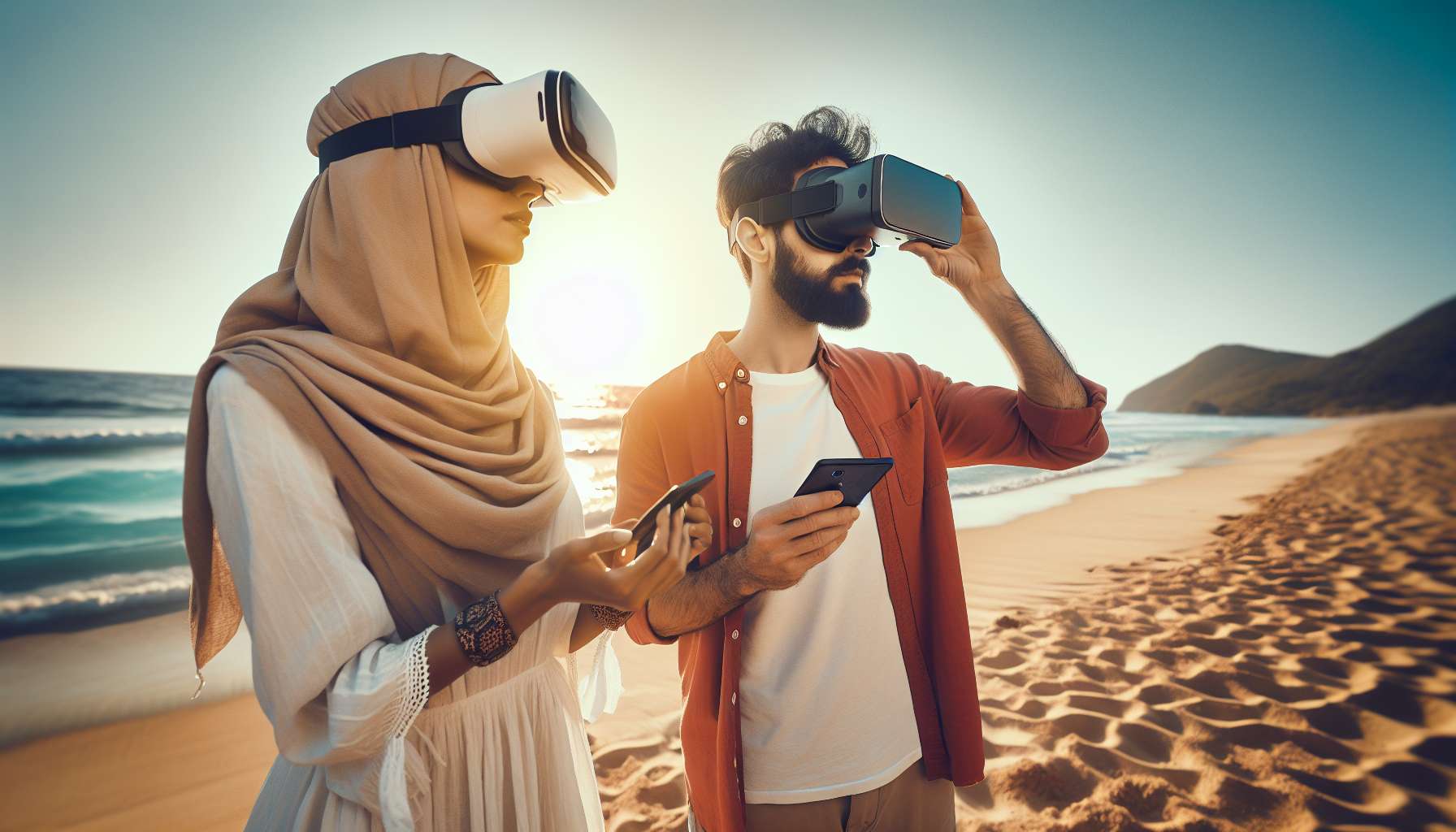Discover the Future of Marine Tourism with Augmented Reality
Imagine embarking on a journey through the vast ocean, surrounded by majestic marine creatures and breathtaking landscapes. Now, picture enhancing this experience with the power of augmented reality (AR). With AR, marine and wildlife tourism can be taken to a whole new level, offering visitors an immersive and educational adventure like never before.
1. Dive into the Depths of the Ocean
AR technology allows tourists to explore the underwater world without getting wet. By wearing AR-enabled goggles or using their smartphones, visitors can witness the wonders of the ocean in real-time. Imagine swimming alongside dolphins, observing colorful coral reefs, and even coming face-to-face with elusive sea turtles. AR overlays digital information onto the real world, providing users with a unique and interactive experience.
2. Learn about Marine Life in Real-Time
AR not only offers a visual spectacle but also serves as an educational tool. As tourists explore the marine environment, AR can provide real-time information about the species they encounter. By simply pointing their device at a fish or a plant, visitors can access detailed information about its habitat, behavior, and conservation status. This interactive learning experience fosters a deeper understanding and appreciation for marine life.
3. Virtual Guides for Wildlife Encounters
When it comes to wildlife tourism, AR can act as a virtual guide, enhancing the visitor’s experience. Imagine going on a safari and having an AR app identify and provide information about the animals you spot. Whether it’s a lion, elephant, or giraffe, AR can offer insights into their behavior, diet, and natural habitat. This technology bridges the gap between tourists and wildlife, creating a more engaging and informative encounter.
4. Conservation and Environmental Awareness
AR has the power to inspire and educate tourists about the importance of marine and wildlife conservation. By overlaying virtual elements onto the real world, AR can simulate the effects of pollution, climate change, and habitat destruction. This immersive experience raises awareness and encourages visitors to take action to protect our fragile ecosystems. AR can also showcase successful conservation efforts and highlight the positive impact of sustainable tourism.
5. Enhancing Safety and Accessibility
AR technology can significantly improve safety measures in marine and wildlife tourism. For example, AR-enabled navigation systems can guide tourists through unfamiliar terrains, ensuring they stay on designated paths and avoid potential hazards. Additionally, AR can provide real-time updates on weather conditions, tide levels, and other crucial information, allowing visitors to make informed decisions and stay safe during their adventures.
6. The Future of Marine Tourism
The potential of AR in marine and wildlife tourism is vast and ever-evolving. As technology advances, we can expect even more innovative applications. For instance, AR could enable tourists to witness historical events that occurred in the ocean, such as shipwrecks or ancient civilizations. Furthermore, AR could facilitate virtual interactions with marine biologists and conservationists, offering a behind-the-scenes look at their work.
AR has the power to revolutionize marine and wildlife tourism, providing visitors with unforgettable experiences while promoting conservation and environmental awareness. As this technology continues to evolve, we can look forward to a future where every adventure becomes an opportunity for education, exploration, and appreciation of our natural world.





